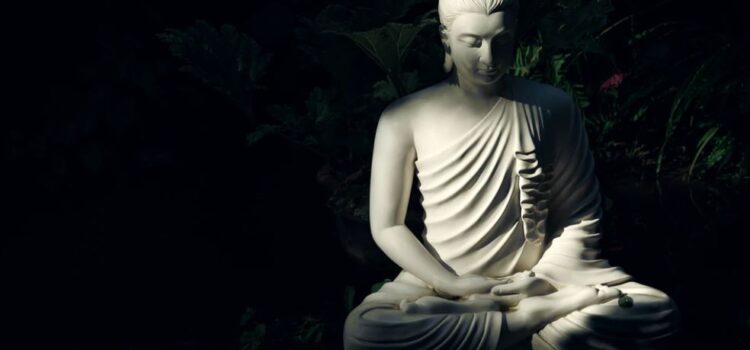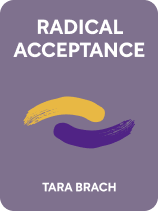

This article is an excerpt from the Shortform book guide to "Radical Acceptance" by Tara Brach. Shortform has the world's best summaries and analyses of books you should be reading.
Like this article? Sign up for a free trial here .
What are the Three Refuges in Buddhism? How can Buddha, Dharma, and Sangha help you overcome your fears?
Sometimes fear is so intense that it seems impossible to face. Ideally, we want to find the feeling of safety and belonging inside ourselves and one way to do that is by retreating to the Three Refuges: Buddha, Dharma, and Sangha.
Continue reading to learn more about Buddha, Dharma, and Sangha.
Fear and the Three Refuges
While mindfulness and Radical Acceptance are effective ways out of the trance of fear, sometimes the fear is so intense that it seems impossible to face—it feels like inviting it in will destroy us. When that happens, we need to find sources of safety and strength that will allow us to overcome the fear. This is where the Three Refuges (Buddha, Dharma, and Sangha) come in.
Usually the easiest and most accessible way is to find people who can help. A friend, a teacher, or a therapist can often offer the support we need to look at our fears without being overwhelmed by them. When we face intense fear, it’s helpful to be reminded that we’re part of something greater than our fearful selves.
However, while seeking outside help is a good (and sometimes necessary) first step, ideally we’ll want to find that feeling of safety and belonging inside ourselves. Buddhism provides three fundamental refuges that we can retreat to for strength and peace.
Buddha, Dharma, and Sangha
1) The first refuge is the Buddha. Exactly what that means varies from person to person. For some people it’s the man Siddhartha Gautama, who faced Mara under the bodhi tree and reached enlightenment. For others it’s the Buddha’s enlightened heart and mind—much like a Christian might pray to Jesus or Mary, a buddhist might experience the Buddha as a higher power or presence that loves and cares for us all.
However, the real power of the Buddha’s story is in the idea that any of us could accomplish similar feats. Siddhartha was much like us before his awakening, and we have the same potential for enlightenment that he had. Therefore, the essence of taking refuge in Buddha is having faith in ourselves, in our own ability to awaken from the trance and reach enlightenment. In that sense, we might consider “the Buddha” to be our own Buddha nature.
2) The second refuge is dharma. Dharma is a Sanskrit word meaning natural laws, the way of things, or the truth. Seeking refuge in dharma means accepting and taking comfort in the knowledge that everything changes. It also means understanding that, in trying to cling to our pleasant experiences and fight our unpleasant ones, we put ourselves deeper into the trance of fear.
3) The third refuge is sangha, meaning community. Traditionally it means the spiritual community, the other aspirants who share your struggles and your search for spiritual freedom. More recently, particularly in Western cultures, it’s come to mean anyone who helps you pursue your own awakening. For example, seeing a therapist or talking to a friend with whom you can be open and vulnerable are two ways of taking refuge in sangha.
Sangha can also mean a larger community, not just the people in your immediate circle. This is closer to the original meaning, where you can take comfort from knowing that there are many people in the world who share your struggles and your hopes. Facing a personal fear is isolating; facing a shared fear makes us feel connected.
Fear and Radical Acceptance
We all experience our fears differently, so each of us finds one refuge or another more comforting or easier to access. It’s important to find what works for you of Buddha, Dharma, or Sangha.
Like all spiritual practices, developing a real sense of safety and belonging can take time—possibly years. However, doing so can transform how we relate to our fears. Once we don’t feel overwhelmed anymore, we can start meeting fear with Radical Acceptance.
A side note: For some people, meditation and mindfulness alone aren’t enough. Medication is a fiercely debated topic in many spiritual communities, but some people may find that they need it in order to gain control over their fears or other experiences.
For someone whose experiences are too overwhelming, medication can be the kindest response. Such treatments can work hand in hand with spiritual practice to help people overcome anxiety, depression, and other mental health issues. By reducing the impact of those experiences, medications can help people to take the necessary pause and recognize what’s happening inside their bodies.

———End of Preview———
Like what you just read? Read the rest of the world's best book summary and analysis of Tara Brach's "Radical Acceptance" at Shortform .
Here's what you'll find in our full Radical Acceptance summary :
- How to live your life fully experiencing everything
- Why you need to let go of judging yourself or your experiences
- How you can acknowledge and welcome any experience






